
The Prussian Crusades

The Prussian Crusade was a series of 13th-century campaigns of Roman Catholic Crusaders, primarily led by the Teutonic Knights, to christianize the pagan old prussians. Invited after earlier unsuccessful expeditions against the Prussians by Polish princes, the Teutonic Knights began campaigning against the Balts in 1230. By the end of the century, having endured several prussian uprising, the Knights had established control over Prussia and administered the Prussians through their monastic state.
This campaign simulates the struggle between competing nations in the baltic and eastern europe areas around 1230.
Each players will control one of the several nations involved. These are:
Teutonic Order IV/30 (Grey on map)
Polish III/63 (Red on map)
Lithuanian IV/18 (Light blue on map)
Russian III/79 (Violet on map)
Prussian IV/28 (Green on map)
Danes III/40 (Blue on map)
The campaign starting year is 1230. Each nation start with a full army and a treasure of three nomisma (or whichever name you prefer to give to gold coins). The army is deployed in the capital
Each year is divided in three seasonal turns: winter, spring and summer. Fall is the mud season with just administrative activity.
Each seasonal turn, the players myust secretly decide their activity. They can:
Wage an offensive-
The army can move up to two friendly areas and invade an enemy territory to conquer it. The offensive costs 1 nomisma.
It is possible to attack through marshes just by winter, or by sea just by summer. These areas are impassable in other seasons.
The invaded country can defend the area if his army is present there or if is on defend order, and in such a case a battle is fought, or leave it unprotected.
When a battle is fought the invader conquers the invaded area winning the battle. If he loses it, he must withdraw to the nearest friendly territory he is coming from.
The army winning the battle will recover all the losses. The loser can recover the losses just paying one nomisma
If the area is undefended, a siege starts. The siege is succesfull with a die roll of 5+. The die roll is modified by a +1 for each consecutive siege season. Just a succesful siege will let the invader to seize the territory. In any case a siege roll will cost some losses to the besieger, one ME in DBMM100, 10AP in DBMM200 and 20AP in DBMM400. These losses can be recovered for 1 nomisma cost
Defend
The army stand still and can intecept and fight an enemy invading. In the case two or more enemies invaded, the defender decides which one fight. The defender can also move to a besieged friendly area to fight off the invader.
Keeping a siege
The army can stand at no cost in an enemy sieged area keeping the siege and rolling againg to check if it will be successful.
In the administrative phase, each player will receive one nomisma for each territory contrelled, and one victory points for each territory owned and battle won. The armies must withdraw to a friendly territory and stop a siege.
The campaign can be played over several years adding all victory points scored and played with differents DBMM rulesets: DBMM100 campaign can be played in one session, while 200 and 400 versions will need more game sessions.
The Map
The idea of this campaign, originally thought for DBA, is by David Lawrence, that I thanks for the inspiration and the maps.
He sent me several maps to let play this campaign from four to eleven players:
These are the maps
Four players
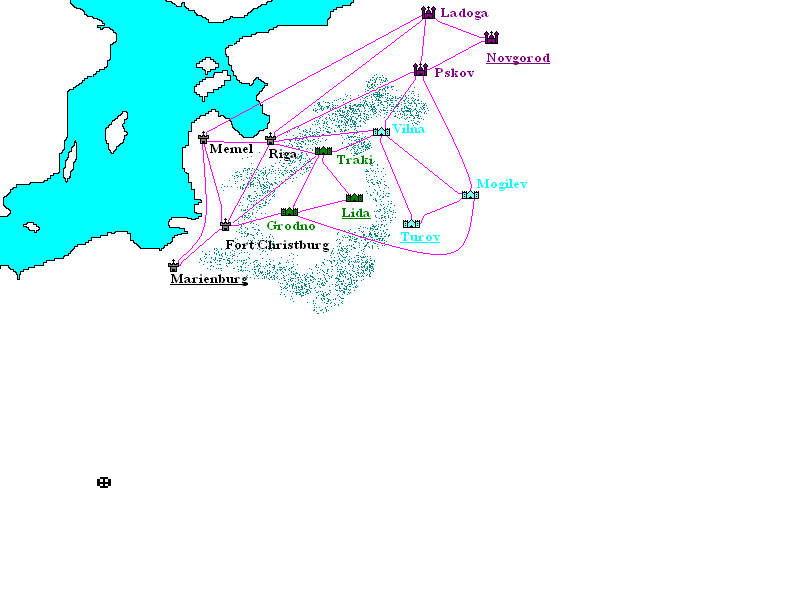
Five players
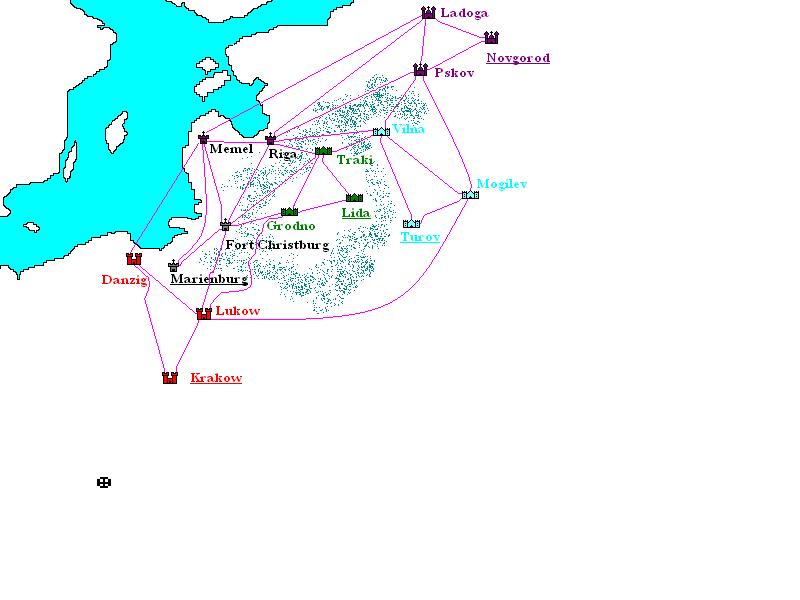
Seven players
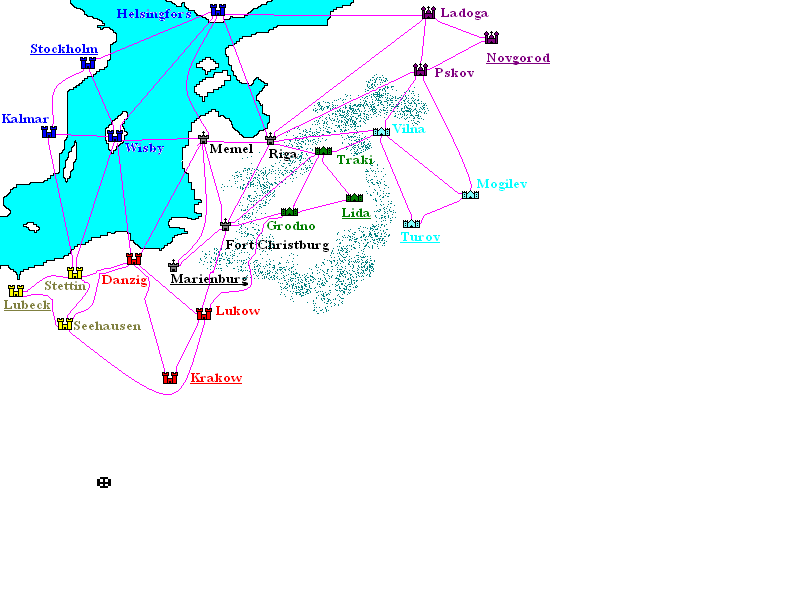
Eight players
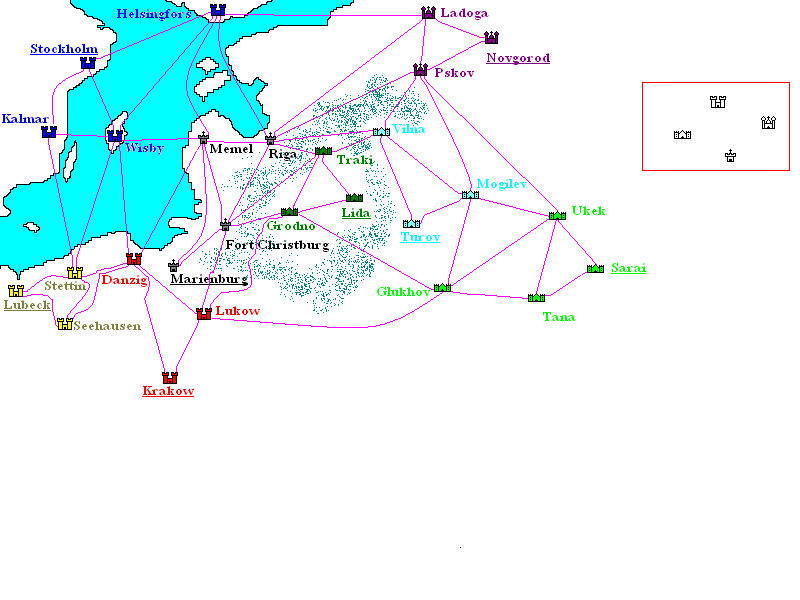
Nine players
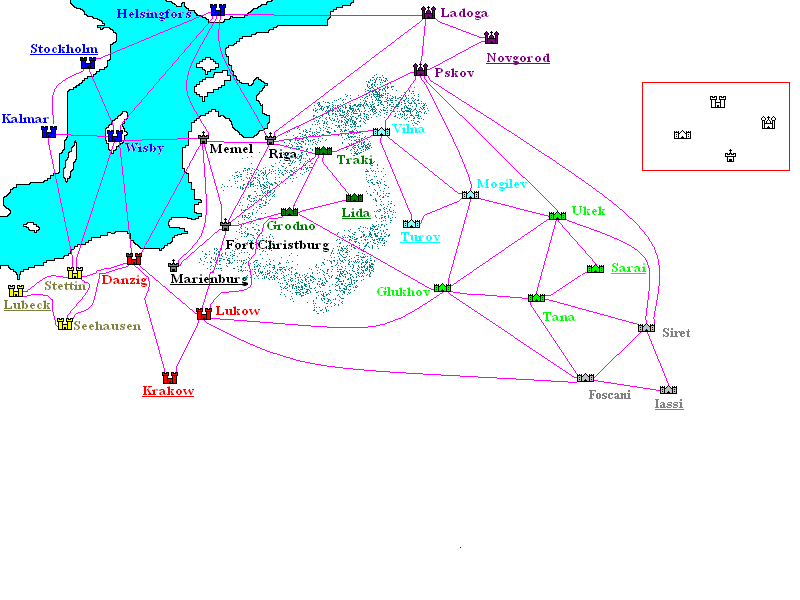
Ten players
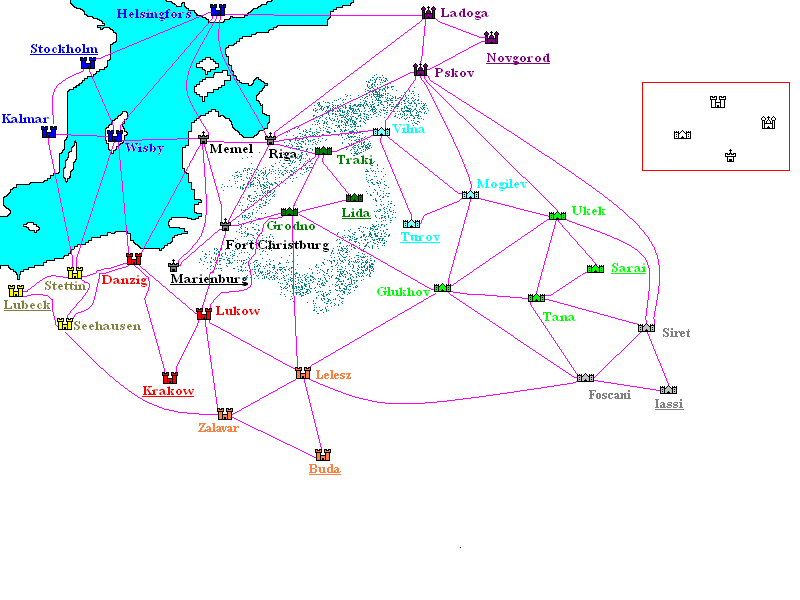
Eleven players
The nations are:
Medieval German (yellow), early Polish (red), Danes (blue), Teutonic (grey), Prussian (green), Lithuanian (light blue), early Russian (violet), early Hungarian (orange), later Bulgar (brown), Cuman (light green), Golden Horde (light grey).
If you feel brave and you have a large club, this is a 14 players version with added Serbians (medium blue), Epirote Byzantine (violet) and Latin Empire (Red). The brown line in the southern part of the map represents the balcanic mountain range, that can be crossed just in summer